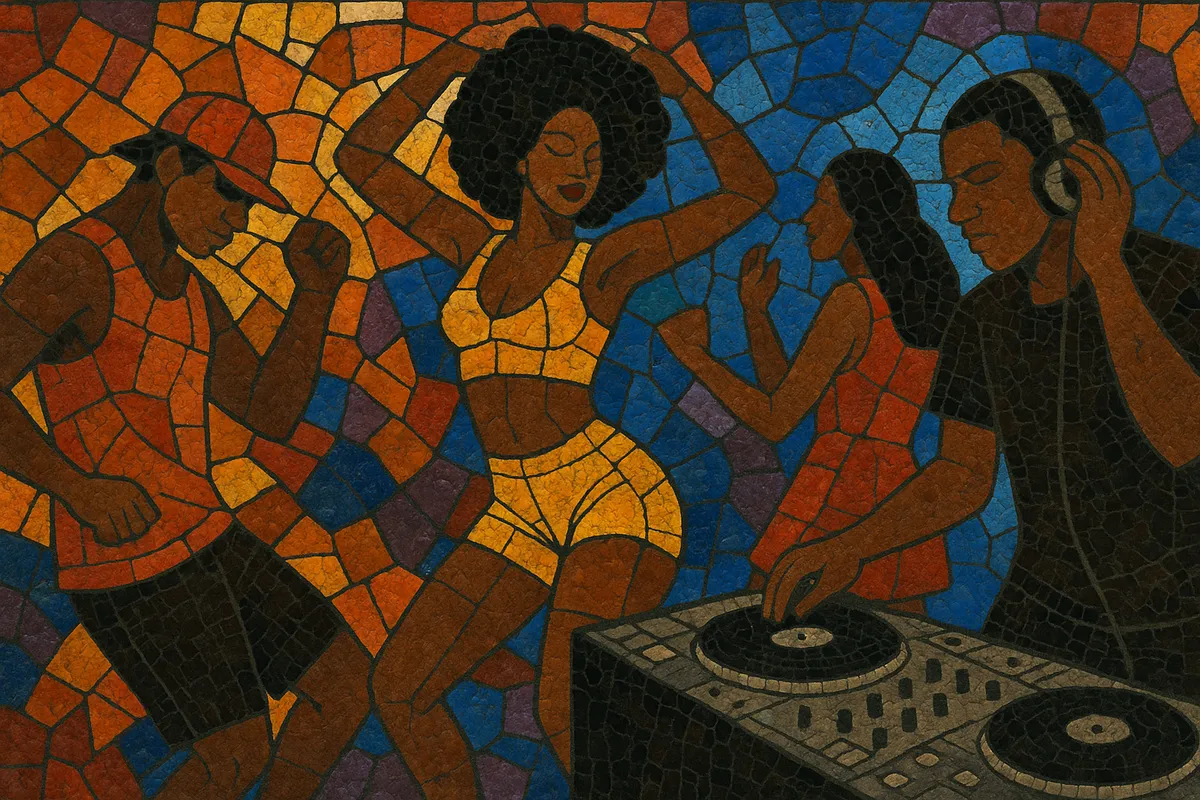Funk brasileiro (also known internationally as baile funk) is an urban dance music from Brazil that grew out of Rio de Janeiro’s favela party culture. It took the skeletal templates of Miami bass and electro, then reimagined them with Portuguese lyrics, crowd‑shouting hooks, and Afro‑Brazilian rhythmic ideas.
The sound is defined by booming 808 sub‑bass, punchy drum programming, and chant‑like vocals designed for participation on the dance floor. While early tracks typically sat around 130–140 BPM with the iconic tamborzão groove, later waves popularized 150 BPM energy and an even more percussive, hard‑hitting feel.
Lyrically it ranges from party anthems and romantic “melody” cuts to street reportage and social commentary. Over time it branched into many substyles—proibidão, ostentação, 150 BPM/mandelão, automotivo, and pop‑crossover hybrids—while influencing global pop, rap, and club music.
Funk brasileiro emerged in Rio de Janeiro’s favelas as local DJs absorbed Miami bass and electro imports, reshaping them with Portuguese vocals and crowd‑driven call‑and‑response. Sound systems and bailes (street/club parties) were central, with crews like Furacão 2000 and pioneers such as DJ Marlboro helping to standardize the style and amplify it across neighborhoods and radio.
The 1990s brought radio hits, compilation tapes, and the rise of the tamborzão beat, while MCs popularized anthem‑like “raps” and “melody” tracks. As the scene grew, it also attracted controversy due to explicit lyrics, policing of bailes, and moral panics. Despite pushback, classic anthems and charismatic MCs made the genre a fixture in Brazilian popular culture.
The 2010s saw a creative boom: São Paulo fostered ostentação (luxury‑themed) lyrics; Rio’s 150 BPM surge intensified club energy; Minas Gerais cultivated funk de BH; automotivo emphasized ultra‑loud, car‑audio‑oriented mixes. Online platforms (KondZilla’s video ecosystem among others) accelerated national reach and professionalized visuals, while pop‑leaning artists carried the sound onto mainstream charts.
International collaborations and viral hits exported baile funk’s energy worldwide. Producers and DJs outside Brazil began sampling tamborzão, adopting 150 BPM frameworks, and blending funk brasileiro with trap, EDM, reggaeton, and pop. The genre’s raw immediacy and participatory ethos continue to inspire hybrid forms while remaining rooted in baile culture.


